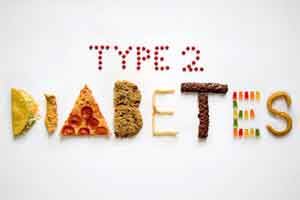- Home
- Editorial
- News
- Practice Guidelines
- Anesthesiology Guidelines
- Cancer Guidelines
- Cardiac Sciences Guidelines
- Critical Care Guidelines
- Dentistry Guidelines
- Dermatology Guidelines
- Diabetes and Endo Guidelines
- Diagnostics Guidelines
- ENT Guidelines
- Featured Practice Guidelines
- Gastroenterology Guidelines
- Geriatrics Guidelines
- Medicine Guidelines
- Nephrology Guidelines
- Neurosciences Guidelines
- Obs and Gynae Guidelines
- Ophthalmology Guidelines
- Orthopaedics Guidelines
- Paediatrics Guidelines
- Psychiatry Guidelines
- Pulmonology Guidelines
- Radiology Guidelines
- Surgery Guidelines
- Urology Guidelines
Management of pediatric type 2 diabetes : latest ADA guidance

The American Diabetes Association (ADA) has issued a position statement on comprehensive care of children with type 2 diabetes. It has been published online Nov. 13, 2018, in the journal Diabetes Care.
The Guidelines focus on lifestyle and behavioural management, pharmacologic approaches, and strategies for avoiding and treating diabetes-related complications and their objective is to provide an improved and up-to-date understanding of T2D in youth. It also outlines pathophysiology, diagnosis, and risk factors, pharmacologic approaches to glycemic management and associated comorbidities, complications, and transition from pediatric to adult care.
Additionally, the statement details potential diabetes-related complications and guidelines on screening, prevention, and management for each. Transitioning patients properly from pediatric to adult care providers is addressed as well, as the authors indicate this is essential in providing appropriate care of youth with T2D.
Key Recommendations-
- Risk-based screening for youth who are overweight or obese based on body mass index (BMI) measurements, and who have additional risk factors for diabetes.
- It is also recommended that children and adolescents who are overweight and obese in whom a diagnosis of type 2 diabetes is being considered have a panel of pancreatic autoantibodies tested to exclude the possibility of autoimmune type 1 diabetes.
- Youth with T2D and their families receive comprehensive diabetes self-management education and support that is specific to youth and culturally appropriate.
- Health care providers should use standardized and validated tools to assess diabetes distress and mental/ behavioural health in youth with T2D, referring them to speciality care when necessary.
- Metabolic surgery may be considered for the treatment of adolescents with T2D who have a BMI over 35 Kg/m2, uncontrolled glycemia and/or serious comorbidities despite lifestyle and pharmacologic intervention.
"Research has indicated type 2 diabetes appears to be more aggressive in youth than in adults, with a faster rate of deterioration of β-cell function and poorer response to glucose-lowering medications," said lead author Silva Arslanian, MD, Scientific Director and Principal Investigator of the Center for Pediatric Research in Obesity and Metabolism, UPMC Children's Hospital of Pittsburgh, and the Richard L. Day Endowed Professor of Pediatrics at the University of Pittsburgh School of Medicine. "Furthermore, there is a higher risk for complications in people with earlier-onset type 2 diabetes, which is possibly related to prolonged lifetime exposure to hyperglycemia and other atherogenic risk factors, including insulin resistance, dyslipidemia, hypertension, and chronic inflammation. Thus, we must continue to make strides in recognizing the specific needs of youth and adolescents who are at-risk or diagnosed with type 2 diabetes."
"Over the last 20 years, there has been a tremendous increase in knowledge of youth-onset type 2 diabetes and the important differences that exist from diabetes presenting at an older age. It is critical that we have a continually evolving understanding of how this disease impacts youth and that we implement effective strategies to best manage type 2 diabetes when diagnosed at a young age," said ADA's Chief Scientific, Medical and Mission Officer William T. Cefalu, MD.
The incidence of type 2 diabetes (T2D) in people under the age of 20 is increasing in the United States, with one national study indicating a 4.8 percent increase of newly diagnosed cases of T2D in the age group from 2002 to 2012. Youth and adolescents living with T2D face many of the same challenges as adults diagnosed with the disease yet are at risk of developing diabetes-related complications at an earlier age, which can greatly impact their quality of life and life expectancy
Any future updates to pediatric care will be published in the ADA's annual Standards of Medical Care in Diabetes.

Disclaimer: This site is primarily intended for healthcare professionals. Any content/information on this website does not replace the advice of medical and/or health professionals and should not be construed as medical/diagnostic advice/endorsement or prescription. Use of this site is subject to our terms of use, privacy policy, advertisement policy. © 2020 Minerva Medical Treatment Pvt Ltd